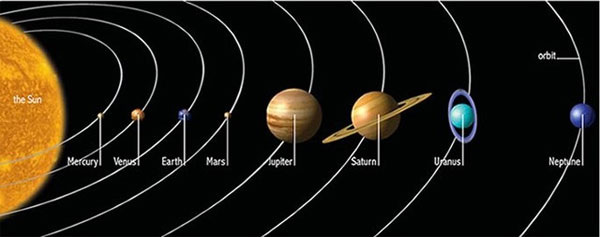December 28: Galileo discovers a new planet in the solar system
On December 28, 1612, Galileo observed a new planet in our solar system with a telescope. It is the furthest planet in the solar system, Neptune.
Galileo Galilei was an Italian astronomer, physicist, mathematician and philosopher, who played an important role in the scientific revolution. Galileo was called the "father of modern astronomy", "the father of modern physics", "the father of science" and "the father of modern science". Stephen Hawking said "Galileo is perhaps more than any individual person, responsible for the birth of modern science".

Galileo Galilei
Galileo was the first astronomer to observe Neptune, but Galileo mistook Neptune as a fixed star when it appeared in close proximity to Jupiter in the sky. So Galileo was not recognized as the discoverer of Neptune.
The astronomers Le Verrier and Adams were the ones who studied and discovered the orbit of the planet, after which they were recognized as discoverers of Neptune.

With only one telescope, Galileo was able to detect the farthest planet in the solar system in 1612.
Immediately after the discovery, it was called Neptune simply "planet outside Uranus" or "planet Le Verrier" . Galileo was the first to propose a name, which he called the planet Janus . After being recognized as the discoverer of Neptune, Le Verrier immediately proposed the name Neptune , and declared untrue that the name was officially recognized by the geography and astronomical authorities. "Bureau des Longitudes" of France.
Neptune is the eighth and most distant planet from the Sun in the Solar System. It is the fourth largest planet in diameter and the third largest in volume. Neptune has the largest density of the planets in the solar system. Neptune has 17 times the mass of the Earth.
- Evidence of the 9th planet of the Solar System
- Explore the atmospheric atmospheres of the solar system
- 99.99% has the 9th planet in the solar system
- The 9th planet can cause disaster for the solar system
- June 22: Galileo Galilei is imprisoned, forced to
- The mysterious X planet is devastating the solar system
- NASA first admitted to having a strange planet hidden in the Solar System
- The 9th planet of the solar system is ... stolen goods?
- Successfully decode the signal Galileo global positioning satellite system
- Stunned to discover a new dwarf planet in the Solar System
- What if we try to land on Jupiter?
- Vietnam successfully used Galileo positioning signal
 Biography of hero Vu A Dinh
Biography of hero Vu A Dinh History of hematology
History of hematology Who is Mr. Tam Da 'Phuc-Loc-Tho' and what does it mean?
Who is Mr. Tam Da 'Phuc-Loc-Tho' and what does it mean? Unbelievable facts about the history of the oil and gas industry: Gasoline used to be cheaper than water, so abundant that it had to be dumped into the river...
Unbelievable facts about the history of the oil and gas industry: Gasoline used to be cheaper than water, so abundant that it had to be dumped into the river...